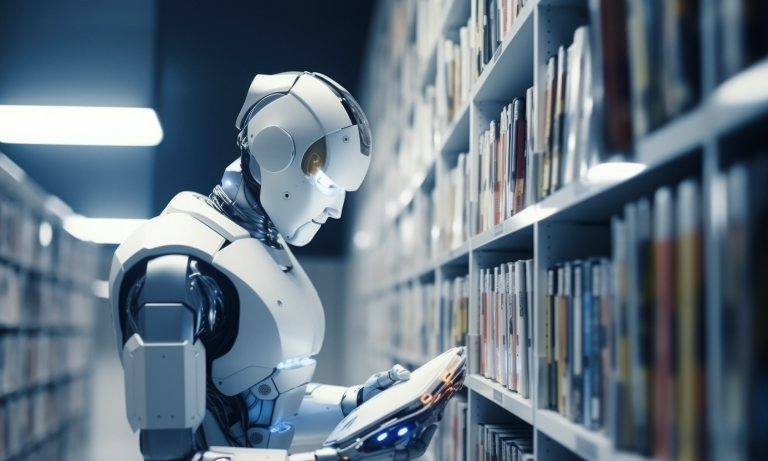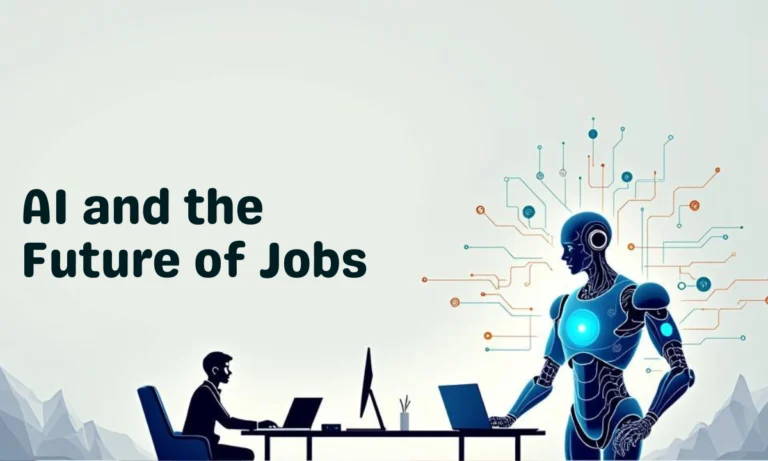Education is undergoing a major transformation with the rise of Artificial Intelligence (AI). From personalized learning platforms to smart grading systems, AI is empowering teachers and students alike. It’s not just about replacing traditional methods but enhancing them with technology to create a more engaging and effective learning experience.

How AI is Used in Education Today
Personalized Learning
AI-powered platforms analyze student performance and learning patterns to provide customized lessons, quizzes, and study recommendations.Smart Grading Systems
AI can automatically grade tests, assignments, and even essays, saving teachers time and providing instant feedback to students.Virtual Tutors & Chatbots
Students can get 24/7 assistance through AI-based chatbots and virtual tutors that answer questions and explain concepts.Administrative Efficiency
Schools and universities use AI to automate tasks like admissions, scheduling, and record-keeping, freeing educators to focus on teaching.Accessibility in Learning
AI tools like speech-to-text, language translation, and adaptive learning apps make education more inclusive for students with disabilities.
Benefits of AI in Education
Personalized Learning Paths: Tailored lessons based on individual strengths and weaknesses.
Time-Saving for Teachers: Automation of repetitive tasks allows more focus on teaching.
Improved Student Engagement: Interactive AI tools make learning fun and effective.
Data-Driven Insights: AI helps teachers track progress and adjust teaching strategies.
Inclusive Education: AI removes barriers for differently-abled students.
Challenges of AI in Education
High cost of implementation in schools.
Dependence on technology may reduce human interaction.
Concerns around student data privacy.
Training teachers to use AI tools effectively.
The Future of AI in Education
AI-Powered Classrooms: Fully integrated AI systems to support teaching and collaboration.
Lifelong Learning Platforms: AI will provide tailored education for professionals and learners of all ages.
Global Access to Education: AI will bridge the gap for underserved regions by offering remote, quality education.
Emotional AI: Tools that can understand student emotions and adjust lessons accordingly.
Conclusion
AI in education is not about replacing teachers but about empowering them. With personalized learning, automated grading, and improved accessibility, AI is making education smarter, faster, and more effective. The future belongs to students and teachers who can harness AI to unlock new ways of learning.
FAQs on AI in Healthcare
1. How is AI used in education today?
AI is used in personalized learning platforms, smart grading systems, virtual tutors, administrative automation, and accessibility tools like speech-to-text and translation.
2. What are the benefits of AI in education?
The key benefits include personalized learning paths, time-saving for teachers, increased student engagement, data-driven insights, and more inclusive learning for students with disabilities.
3. Can AI replace teachers in the future?
No, AI cannot replace teachers. Instead, it assists them by automating repetitive tasks, offering learning insights, and providing personalized support, while teachers remain essential for guidance, mentorship, and emotional support.
4. What are the challenges of using AI in education?
Challenges include high implementation costs, reduced human interaction, concerns about student data privacy, and the need to train educators to use AI effectively.
5. What is the future of AI in education?
The future includes AI-powered classrooms, global access to quality education, lifelong personalized learning, and emotional AI that adapts to students’ moods and learning needs.





